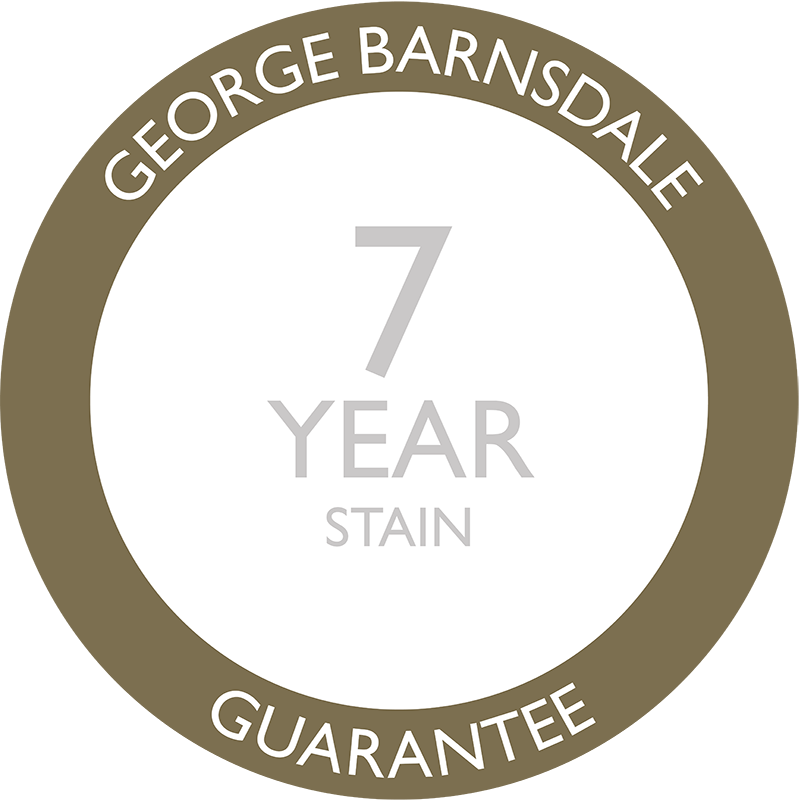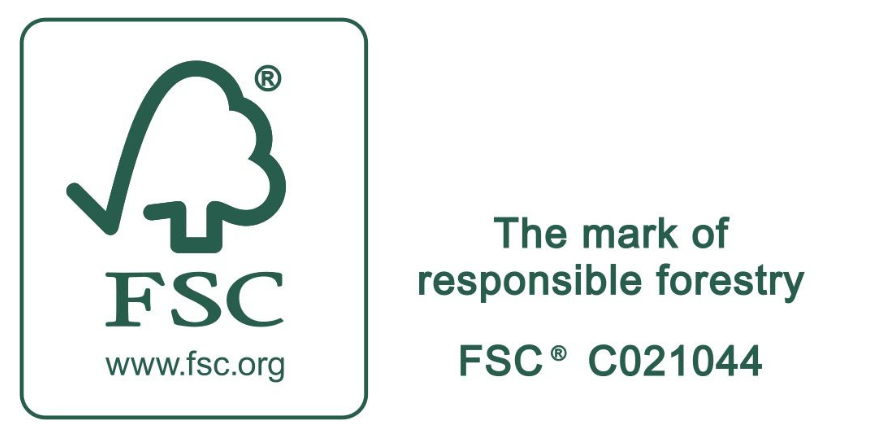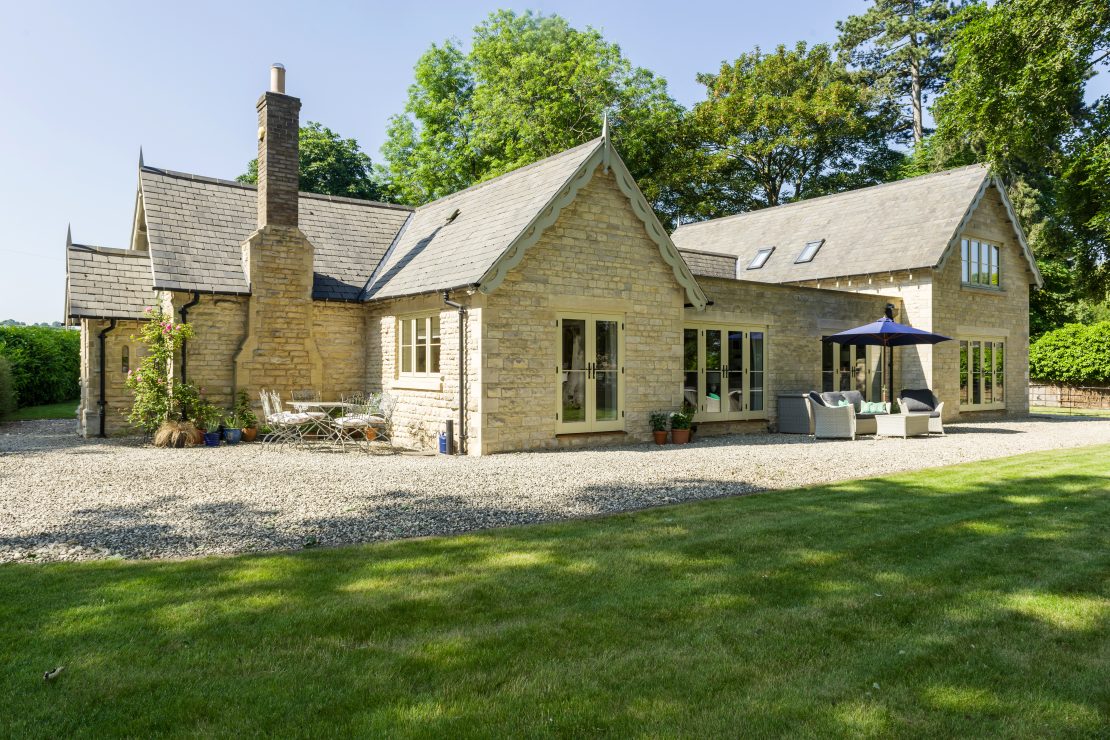January 25, 2018
“Research is creating new knowledge.” – Neil Armstrong
“I have not failed. I’ve just found 10,000 ways that won’t work.” – Thomas A. Edison
Manufacturing techniques and the software systems that control many of them have changed enormously over the last few years, and companies that have not kept up with the changes have struggled to keep up with the industry.
George Barnsdale have embraced technology over the generations and so are leaders in manufacturing bespoke timber windows and doors using the latest techniques. This has been achieved by researching every element of the manufacturing process, and we continue to do this with increased emphasis.
The Built Environment is changing, through technological advance, environmental demands and customer expectations, and we have to ensure our products adapt to this. Over the last few years, huge changes have been made to the materials we use, including glass, timber, adhesives and paint.
Understanding how all this fits together requires us to have a wide knowledge of, and take into account, all the factors involved. Without carrying out continuous research and development, it is impossible for us to maximise the opportunities presented by all these variables. For example, there is an environmental impact from the products we manufacture and the way we manufacture them. The more we understand this, the better we can reduce it, to the benefit of our customers, ourselves and the world in general.
George Barnsdale are one of only a handful of companies in the whole of Europe manufacturing timber windows and door who are involved in basic research and development. Now, we could easily simply look at what everybody else is doing and just copy them. Indeed, as with all research and development, the outcomes are not predictable and some of our work has not always come out with positive results. However, it always results in us having more knowledge than we had before. It is that which truly sets us apart for our competitors!
With the fundamental knowledge we develop, we can also greatly influence industry standards. For example, the British Standard BS644 was changed to ‘Timber windows and doorsets. Fully finished factory-assembled windows and doorsets of various types’. George Barnsdale people proposed the change and wrote the basic draft which was subsequently accepted by the Technical Committee.
A brief history of our highlights
1920-39 Fred Barnsdale assists in development of BS644 British Standard for Timber Windows
1990 First UK joinery company to install Computer Aided Design (CAD)
1995 First UK joinery company to install CNC machine (computer numerical control)
2000-1 SMART research grant into joint design
2003-4 EU Ecotan project – modifying timber with vegetable oil
2014-6 EU Servowood project – prediction of service life for exterior wood coatings
What has our Research and Development involved?
Our research and development is broad and far-reaching, encompassing all elements of the business: types of timber and optimum performance, joint design, product design, insulated glass units, thermal performance, coating systems, security, acoustic performance, ventilation, ironmongery, developing software systems to integrate quotation, pre-production and automated manufacture with customisation and operational performance.

In 2017 we opened up our own research and development centre and below we highlight key areas and explore our research and development in more detail.
Timber
Timber is our basic raw material, and being naturally produced is a very variable product. When considering the types of timber we should use in our products, we need to research the durability and sustainability of each type, how well we can machine it, how well it will work with our coating systems and the relative cost.
For example, in 2003-4 we were involved in an EU financed project ‘Ecotan’. Looking at the feasibility of modifying timber with vegetable oil, in order to increase the durability, value and performance of European timbers. Our partners in the project were the Building Research Establishment, SHR Holland and the University of Bangor. Unfortunately, the process turned out to be commercially unviable. However, as a result of the work we did we now have a much greater understanding of modified timber which assists us with future development – we are very keen on using Accoya, another modified timber, and have a full understanding of its advantages and disadvantages.
Putting different timber types with different coatings through long term tests gives us a great practical knowledge of our products, something we undertake on a regular basis.
Joint design
Timber was traditionally joined together using mortice and tenon joints. Prior to assembly, the two pieces to be joined were liberally covered with lead-based primer. If the joint failed, the primer would act as a very good barrier, keeping out the elements. After the war, most joints were changed to a comb system, also known as finger-jointing, with interlocking fingers on each piece. These solely relied on standard wood preservatives applied using a double vacuum method. This, along with the use of poor timber and poor site finishing led to timber being regarded as a very poor product, despite the fact that there were still a high proportion on timber windows around that were over 100 years old (and still are!).
In 2000-1 George Barnsdale was awarded a ‘SMART’ research grant by the government to look at the idea of creating a novel joint design. Working with the Building Research Establishment, we examined various new systems bonded together with different adhesives and end grain sealers. Tests were also undertaken on the uptake of moisture on endgrain with different materials. This has now become a standard industry test.
We are also running long-term testing on joints to help to understand how different coatings perform.
Product design
Developing such a wide product range with a huge variety of options, to offer the widest choice to our customers, has involved massive investment. We have to ensure that the products achieve all their performance criteria and that we are able to manufacture them in an efficient way.
This has resulted in years of work and product testing. We have also developed the most advanced integrated computerised systems. These allow us to produce clearly understood quotations for our customers (which include U values – heat insulation – and energy ratings), pre-production specifications for customers to check and verify designs, and drawings and manufacturing data for our factory.
Insulated Glass Units (IGU)
Glass obviously has a great effect on the overall performance of a window. Good design of our products allows glass units to perform well and contributes to our promise of long life with low maintenance. Poor design and maintenance does lead to premature failure.
The Building Research Establishment (BRE) in Scotland carried out some long-term tests for George Barnsdale which were completed in 2007. This allowed us to understand how to minimise the moisture in the window’s drained and vented cavity to enhance the life of the IGU. Wherever possible, we now use a drained and ventilated system. As a result of this research and development, we have had very few failures in the last 20 years.
We have also been measuring the thermal performance of narrow profile glass systems (particularly relevant to our Historic Range products) for the last five years. It will take another five years for us to come up with conclusive results. However, the initial data we have generated is very valuable and leads us to be very optimistic about the long-term conclusions.
Thermal performance
George Barnsdale, through extensive research and development, delivered the first timber ‘A’ rated window (the highest Energy Efficiency Rating).
Tom Wright is a British Fenestration Rating Council (BFRC) approved calculator and attends the BFRC technical meetings. As a result of this we have developed a system for automatically calculating U values and energy ratings. We have also developed our products to maximise their thermal performance and are able to offer our customers unrivalled technical advice in this area.
Triple glazing is becoming increasingly important in the minds of our customers as they seek to achieve very high levels of thermal performance. We are currently undertaking a development project to allow our Traditional Range products to retain their traditional appearance but accommodate the use of triple glazing.
Acoustic performance
We have extensive experience of developing products with high acoustic performance – much sought after by customers living in busy, noisy areas.
Glass manufacturers issue data for the performance of different glazing systems. However, the way in which they perform in a fenestration product does not necessarily accord with these figures. We are currently researching to try to understand the reasons for these differences. We then hope to be able to extrapolate (calculate from) the glass manufacturers’ data to predict and calculate the performance of our products. This involves a huge amount of testing and analysis of our, and the manufacturers’ data.
Security performance
Security is a key feature in the minds of our customers. Developing products with high levels of security while retaining the traditional look has required detailed development and testing and is ongoing. For example, we have succeeded in passing the PAS24 security test (enhanced security performance) with our sliding sash window range with virtually no change to their appearance. We are currently putting a great deal of resources into the development and testing of our other products.
Long-life performance
George Barnsdale is currently involved in a pan-European project ‘Servowood’ which aims to get a better understanding of how to measure long term performance. Our partners are Building Research Institutes through Europe. We are the only joinery manufacturer involved in the €3,757,276 EU funded programme, which is already showing some very interesting results. Work is now being undertaken to extend the project to get better long term data.
Coating system performance
Extensive work has been undertaken in understanding the effect that factory conditions can have on applying the coatings we use. As a result of this, even our painting line has three different environmental conditions: the main area is kept at around 20?C and 55% humidity; the flash-off area at a lower temperature and very high humidity; and the drying area at around 32?C and lower humidity. Optimising these conditions enhances the coating performance and, when combined with the humidity control through the rest of the factory, ensure that all are products are manufactured in prime condition.
Door design
We are currently running two projects investigating door design. One is further improving the performance of our Traditional Range door products and the other is the new Contemporary Range ultra-high performance doors which will have very high thermal and security properties.
Ventilation
Buildings are becoming much better sealed, due to improved construction products and techniques. However, for healthy living, there needs to be fresh air. We have developed a number of ways of concealing ‘trickle vents’ which can comply with currently Building Regulations without spoiling the appearance of the product. However, as a result of this work we have concluded the trickle vents in any form are a very poor method of controlling the introduction of fresh air into a building. New building systems with heat recovery offer a far better result.
Ironmongery/Hardware/Furniture
There is a huge amount of ironmongery available for us to choose from. However, we design our products to last for decades and so it is important that the ironmongery we select will also last for the lifetime of our products with minimum maintenance.
Our products can be installed in a variety of environments and this must be taken into account. For example, being close to the sea has serious potential for corrosion.
Most ironmongery suppliers give test results for their products but we set out to understand the performance of every product we use and then optimise and utilise the best performing products in each situation. To do this, for example, we have carried out extensive in-house salt spray testing on many ironmongery products. This gives us the best understanding of how the different finishes and coatings are likely to perform. Our equipment allows us to test to ISO9227 (Corrosion tests in artificial atmospheres – salt spray test) and assess these results in accordance with EN1670 (building hardware – corrosion resistance).
Summary
From this brief review of the research and development activity that George Barnsdale undertakes in all aspects of its manufacturing, it is clear that it sits at the heart of the business and is a core competitive advantage for the company going forward.
However, as a summary, it is helpful to compile a brief list of the current and future research activity the company is engaged in:
• Building a test facility
• Air and water test rig to pre-test prototypes
• Acquire a weather test rig
• Improved salt spray test rig
• Acquire the Servowood test rig
• Ten year performance test of narrow IGUs
• Glazing tape development
• Testing different types of Sash windows with traditional looks but high performance
• West London style windows and French doors – testing for original styling but high weather, thermal and acoustic performance
• Entrance doors – traditional look but high performance, low threshold for disabled access and improved security
• Standard casement window – improved performance
• Long term coating performance – develop an easy-clean finish




















